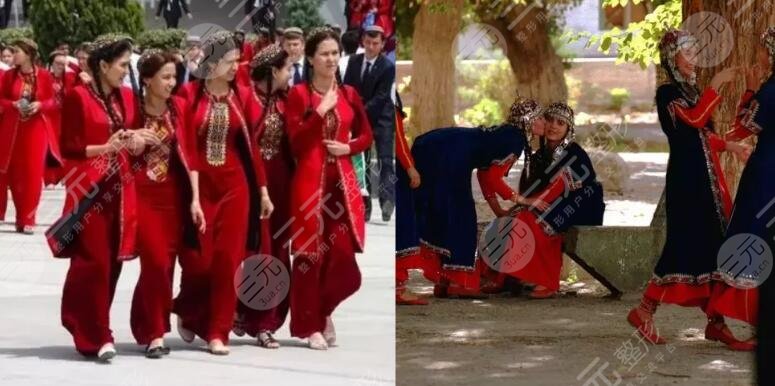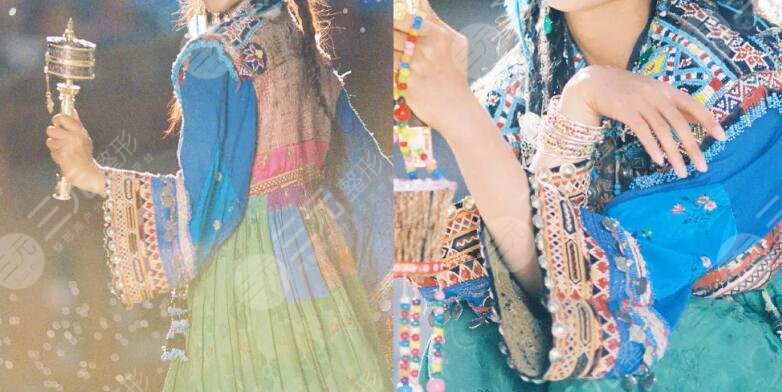The face has the familiar East Asian flavor and special exotic customs, which is also the reason why Chinese people are more likely to accept the Central Asian face, and it is also a good summary of the Central Asian face
In recent years, few people talk about the regional aesthetics of the five Central Asian countries, and few people can find information online
As the transportation hub of Asia and Europe, Central Asia was once the only way of the Silk Road, rich in natural energy. Different from Europe and the United States, it can use culture to compete for everyone's resources in a hundred years

Mystery and intimacy are their synonyms
This "hardness" guarantees that Z can inherit its own aesthetic culture, but it also prevents the pace of exploring multiple beauty
Therefore, today we decide to start from Turkmenistan in Central Asia and have a profound understanding of the regional aesthetics that we have long neglected

01 Enclosed environment
Restore the original national aesthetics
Why Turkmenistan?
Because it is representative enough in mysterious and closed dimensions
Tourists were once unwelcome, and the foreign-related marriage system was strict. Foreign citizens and Turkmen girls need to pay taxes when they marry (The sealing condition is good in recent years)
Turkmenistan, located at the core of Central Asia, has huge oil and natural gas wealth, but it can also attract strong covets. Since ancient times, it has been controversial and constantly invaded by foreigners
Before the formation of Turkmen, there were more than 70 Persians, Macedonians, Turks, Arabs and Mongols as the rulers of the land.

Independence and neutrality is a good choice to stay away from disputes in the future
After the disintegration of the Soviet Union, Turkmenistan passed independence
Turkmenistan even has strict visas for tourists, which makes them seldom spread their own culture and aesthetics
Turkmenistan has a famous "scenic spot" called "the gate of death". The flame has been burning for 40 years, and few people can see it with their own eyes
However, the relatively closed Turkmenistan also retains the original national aesthetic
Young Turkmen still like traditional ethnic costumes. Young people like to wear sheepskin hats, shirts and oriental gowns

Turkmen young girls will have more patterns and decorations. Every day when I go to school and go out, I will wear a red dress with a national pattern
On grand occasions such as big events and weddings, headwear, headwear, hair ornaments, chest ornaments, wrist ornaments and rings will be worn
Various complex shapes are forged with various complex tools. All clothes will be saturated, and then embroidered with Turkmen embroidery samples handed down from generation to generation
This traditional Turkmen clothing and embroidery has strong oriental color, and many masters will seek inspiration from Turkmen patterns
What needs to be inherited can be inherited, and what needs to be retained can be retained. This may be the benefit of Turkmenistan's choice of independence and isolation to its national aesthetics

02 National Features of Turkmen
Turkmen seldom mix with foreign countries due to their relative isolation
Turkmen account for 94.7% of the population of 5.62 million in Turkmenistan. There are also ethnic Uzbeks and minorities
The origin of the ancient Turkmen can be traced back to the ancient Ugusians. The ancient Ugusians and Mongolians are closely related, with tall stature, flat and broad face

However, since ancient times, this land has often been invaded and replaced by rulers. Now Turkmen are essentially a mixture of Europans and Mongolians. Their faces are more European, that is, westernized
Xinjiang, China is also an area where European and Mongolian people live together. "Mixed" This method is different from Central Asian Turkmen in gene expression ratio
If most of the beautiful women in Xinjiang are European bones and Mongolian skin, European depth is high, and Mongolian facial lines are thin and soft, then Turkmen prefer to reverse this expression: Mongolian bones and Mongolian skin
Most of them have Mongolia's signature wide cheekbones and slightly larger heads. Some of their faces are not too deep, but their lips are thin, their hair is heavy, their eye sockets are deep, and their eye cracks are wide
Kazakhs have blue eyes, but they are not common among Turkmen. They are mostly light yellow skin and black pupils, just like Mongols

Some Europa genes on Turkmen girls' faces are more expressed
Turkmen women's aesthetic preference is snow-white skin, large eyes and narrow and high nose. It sounds that they will still advocate this westernized face shape for facial aesthetics
03 "More traditional" Turkmen
Because of the small population, women are not only strictly required to marry abroad, but also encouraged to have more children
If you can have 80 to 90 children, that is "heroic mother". It sounds like the mission of this life has been completed
The status of women is closely related to the degree of social isolation
This thinking will also be reflected in Turkmen culture and art

For example, their contradictory preference for color
Girls like warm, gorgeous and colorful red. They are not afraid of tourists' cameras, and their appearance is bright and cheerful
But at the same time, Turkmen people also love white and highly praise the purity and purity of white
Another example is movies
Although the number of films in Turkmenistan is small, they created the golden age of Central Asian films in the 1960s and 1980s
This blank space can be used to describe the spiritual world, tell inspirational stories, and tell class differences. In short, it is Bollywood style

The female characters in Turkmen films are divided into three categories: pursuing love and work freedom, being gentle and virtuous, returning to tradition, fighting bravely for rights, but accompanied by men
Pursue freedom in the context of gentleness and virtue, and return to tradition while pursuing freedom
Closed and free, so for beauty, they should be pure and warm
Are every Turkmen girl who pursues beauty eager to learn pluralistic aesthetics like us?




























